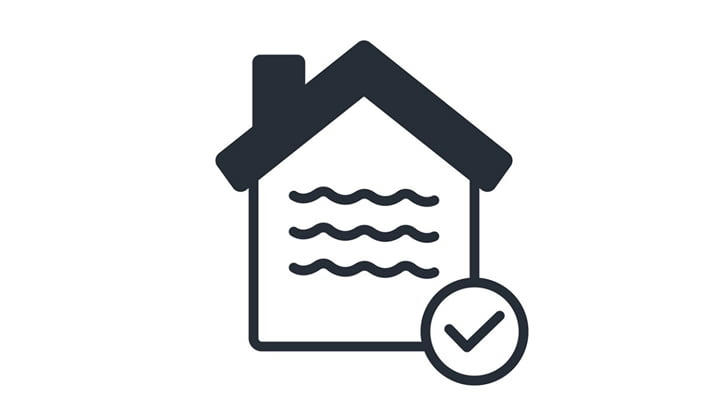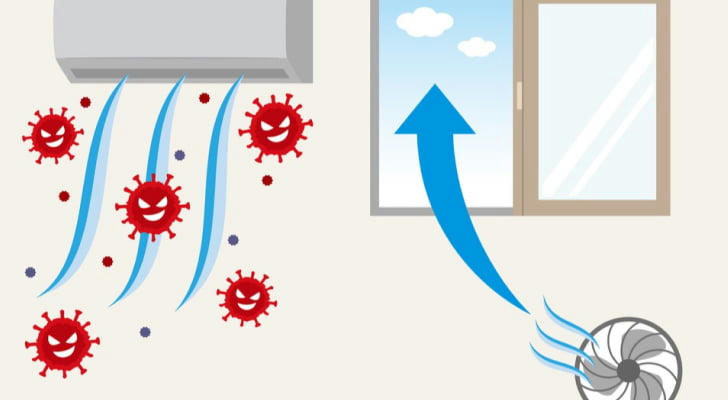Why Your Indoor Air Quality Might Be Worse Than You Think 🌬️😷

When people think about air pollution, they often picture smog-filled cities or smoky industrial areas. But did you know that indoor air can be up to five times more polluted than outdoor air? That’s right—your home, office, or favorite café might be exposing you to invisible pollutants that can affect your health.
From dust and pet dander to hidden mold and chemical fumes, indoor air quality (IAQ) is something you can’t afford to ignore. In this guide, we’ll explore why your indoor air might not be as fresh as you think and what you can do to improve it.
1. What’s Polluting Your Indoor Air? 🤔💨
Household Dust & Allergens
Even if your home looks spotless, it’s impossible to avoid dust. Tiny particles from fabric, skin cells, and outdoor dirt constantly circulate through the air. If you have pets, add pet dander and hair to the mix!
Mold & Mildew
Damp areas like bathrooms, basements, and kitchens create the perfect environment for mold and mildew to grow. These fungi release spores into the air, which can cause allergies, respiratory issues, and even worsen asthma.
Chemicals from Everyday Products
Many household items release volatile organic compounds (VOCs)—chemicals that evaporate into the air. These include:
Cleaning products 🧽
Paints and varnishes 🎨
Air fresheners and scented candles 🕯️
New furniture or carpets 🛋️
Poor Ventilation
If your home isn’t properly ventilated, pollutants get trapped inside, leading to stale and contaminated air.

2. How Bad Indoor Air Affects Your Health 🤧😷
Short-Term Symptoms
Poor indoor air quality can lead to immediate health effects, such as:
✅ Sneezing & coughing
✅ Eye, nose, and throat irritation
✅ Headaches & dizziness
✅ Fatigue & trouble concentrating
Long-Term Risks
Chronic exposure to indoor pollutants can cause serious health problems, including:
🚨 Asthma & Allergies – Dust mites, pet dander, and mold can trigger or worsen respiratory conditions.
🚨 Lung Diseases – Long-term exposure to pollutants increases the risk of bronchitis and other lung issues.
🚨 Heart Problems – Studies suggest that poor air quality can contribute to cardiovascular diseases.
If you or your family members frequently experience these symptoms at home, your indoor air might be to blame!
3. Testing Your Indoor Air Quality 🔬🏡
DIY Air Quality Tests
Not sure if your air is clean? Try these simple tests:
🕵️♂️ Smell test – Does your home have a musty or chemical smell? That could be a sign of mold or VOCs.
🕵️♂️ Dust test – If dust builds up quickly on furniture, your air circulation might be poor.
🕵️♂️ Humidity check – High humidity (above 60%) encourages mold growth, while low humidity (below 30%) can dry out your respiratory system.
Air Quality Monitors
For a more accurate reading, invest in an indoor air quality monitor. These devices detect:
📊 PM2.5 levels (tiny particles that can harm your lungs)
📊 VOC levels (chemical pollutants)
📊 CO2 concentration (high levels can cause drowsiness and headaches)
Professional Air Testing
If you suspect serious air quality issues, consider hiring a professional indoor air quality specialist. They can test for mold, radon, and other hidden dangers.
4. How to Improve Your Indoor Air Quality 🌱💨
Increase Ventilation
Opening windows for just 10-15 minutes a day can dramatically improve air circulation. If you live in a high-pollution area, use ventilation fans instead.
Invest in an Air Purifier
Look for air purifiers with HEPA filters, which can remove 99.97% of airborne particles like dust, pollen, and bacteria. Some purifiers also include activated carbon filters to absorb chemical odors.
Use Natural Cleaning Products
Switch to eco-friendly, non-toxic cleaning products to reduce exposure to VOCs. Even simple ingredients like vinegar, baking soda, and lemon juice can do wonders for household cleaning.
Control Humidity Levels
Keeping your home’s humidity between 30-50% helps prevent mold growth. Use:
✅ Dehumidifiers in damp areas
✅ Houseplants like ferns and peace lilies, which absorb moisture and toxins
✅ Exhaust fans in bathrooms and kitchens
Ditch Artificial Fragrances
Many air fresheners and scented candles contain harmful chemicals. Instead, try:
🌿 Essential oil diffusers
🌿 Boiling citrus peels and cinnamon for a natural fresh scent
🌿 Placing baking soda in bowls to absorb odors

5. Real-Life Case Study: A Family’s Air Quality Wake-Up Call 🏠🚨
Meet the Johnson family. They lived in a modern apartment but noticed that their young son was coughing constantly and having frequent headaches.
After doing some research, they discovered that their home’s indoor air was filled with hidden pollutants from:
❌ VOCs from fresh paint and new furniture
❌ Mold growing in their humid bathroom
❌ Poor ventilation trapping pollutants inside
They decided to make simple changes, including:
✔️ Buying an air purifier with a HEPA filter
✔️ Replacing chemical-based cleaners with natural alternatives
✔️ Opening windows daily to improve airflow
Within weeks, their son’s symptoms disappeared, and the whole family felt healthier and more energized.
6. Final Thoughts: Take Control of Your Air Quality Today! 🌬️💪
You spend 90% of your time indoors, so clean air should be a priority. Even though indoor air pollution is often invisible, its effects are real.
Quick Recap:
✅ Know the Pollutants – Dust, mold, VOCs, and poor ventilation can make indoor air worse.
✅ Recognize the Symptoms – Frequent headaches, allergies, and fatigue could mean bad air quality.
✅ Take Action – Improve ventilation, use air purifiers, and switch to non-toxic products.
By making small adjustments, you can breathe easier, feel better, and create a healthier home for you and your loved ones. 🌿💙
Ready to improve your indoor air? Start today and enjoy the benefits of fresher, cleaner air!
